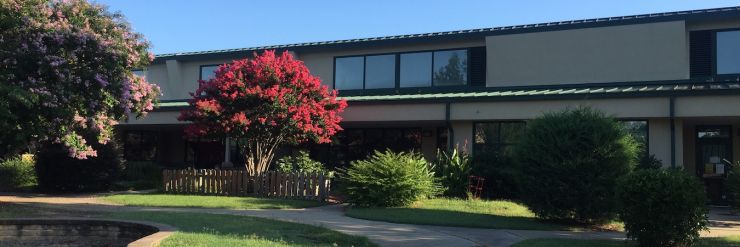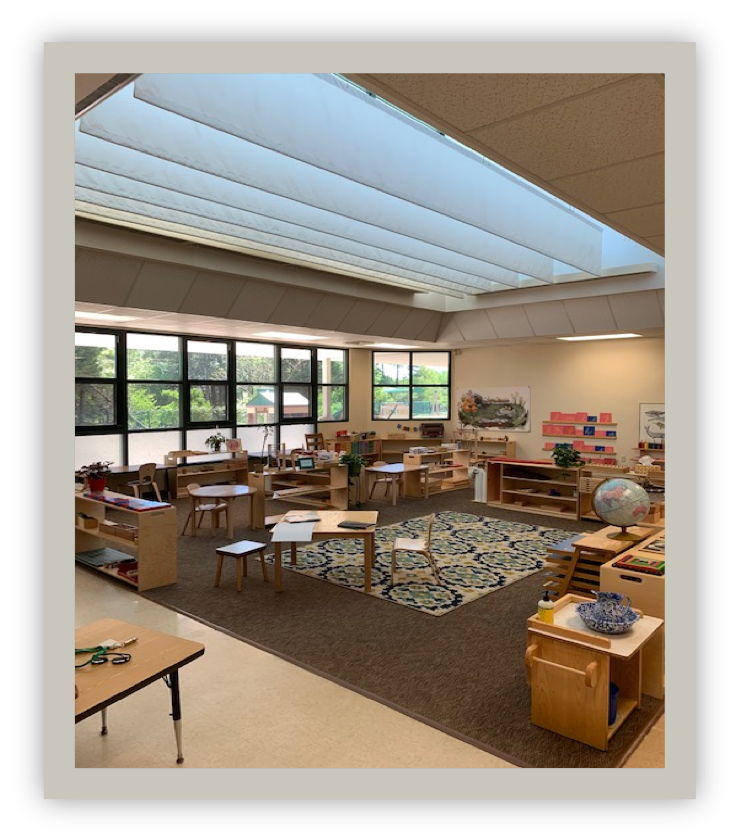In the Children's House classroom, five distinct curricular areas constitute the prepare environment:
Practical Life enhances the development of task organization and cognitive order through care of self, care of the environment, exercises of grace and courtesy, and coordination of physical movement. Each Practical Life material is designed to foster a child’s ability to concentrate and build fine and gross motor coordination. Lessons are presented and arranged from left to right, top to bottom, in preparation for reading and writing.
Students find true citizenship within our classroom, for they learn to care about the classroom environment by watering plants and putting their own materials away. Through Practical Life work, children learn to dress themselves, set out their snacks, and tie their own shoelaces, thus providing the basis for independence at the Primary level.
Sensorial works enable the child to order, classify, and describe sensory impressions in relation to length, width, temperature, mass, color, pitch, etc. Sensorial work increases a child’s ability to observe, compare, differentiate, reason, decide, solve problems, and all around appreciate the world at large. Materials provide children with a system, through which each child can form a basis for order and logic. The experience of order is gained through observing, touching, sorting and categorizing these Sensorial materials.
Mathematics makes use of manipulative materials to enable the child to internalize concepts of number, symbol, sequence, operations, and memorization of basic facts. With Math work, children are introduced to concrete counting concepts and numeral recognition at a young age. The unique Montessori math materials provide a solid foundation to introduce math concepts. The children begin associating numeral symbols with quantities, and continue on to work with the decimal system. The didactic materials are used to illustrate how numbers can be manipulated through the math operations.
Language arts include oral language development, written expression, reading, grammar study, and children's literature. Capitalizing on how the classroom environment flows with speech and vocabulary, Language work is designed to help children with listening, reading, and writing skills. Children begin with exposure to pre-reading work, such as sound games, rhyming, and synonym / antonym concepts. Students then learn letter sounds while tracing the Sandpaper Letters, which reinforces fine motor skills needed for writing. As the lessons progress, children blend words, and then read small paragraphs while simultaneously learning to spell phonetically.
As students master their ability to control a writing utensil they will have a chance to journal and experience formal handwriting lessons.
Cultural activities expose the child to basics in geography, history, and life sciences. Music, art, and movement education are part of the integrated cultural curriculum. Through the exploration of nature, people, and geography of each continent, children learn to appreciate cultures and the needs of others. Cultural Studies work introduces children to the concept of places and times around the world, by working with globes, puzzle maps, flags, and integrated animal study. Basic classification skills and nomenclature are learned through scientific lessons drawing on botany, biology, science and zoology. An early emphasis on cultural studies and peace education is a guiding principle of the Montessori Philosophy.


